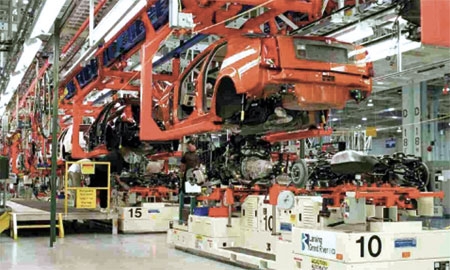It could be said that Mexico’s maquiladoras (assembly plants in which manufacturers import tax-exempt primary goods and export manufactured goods) are an indicator of the continent’s economic tide. The financial crisis that was rooted in the U.S. and soon after gripped most of the world, was deeply felt in Mexico – more so, in fact, than in any other Latin American country. The U.S. is its southern neighbor’s most important customer, receiving some 80% of Mexico’s exports. In turn, about half of Mexico’s imports come from the U.S.
As its number one trade partner (and not to mention tourism market), when the U.S. economy plummeted in 2008, Mexico’s economy contracted by nearly 7%. In 2009, the U.S. imported 18.5% fewer goods (valued at $176.3 billion), and exports to Mexico decreased by nearly 20% to $105.7 billion. Nevertheless, once the U.S. economy began to recover, so did Mexico’s. By 2010, bilateral trade had risen to nearly $400 billion, the highest amount recorded since the U.S. Federal Reserve Bank began documenting numbers in 1980.
Hand in hand with the revitalization of the economy was a huge revival in the non-oil industry and Mexico’s maquiladoras gladly picked up the pace. Last year, the sector’s contribution to GDP grew by 6.1%, and the Economist Intelligence Unit predicts a further 6% rise this year, before steadying off at around 4% for the following several years. This reflects a huge turnaround compared to the worst years of the recession; in 2008 industry shrank by 0.1% and in 2009, by an even more punishing 7.4%.
Recovering domestic demand is also helping to boost industry and retail. Indeed, analysts estimate that Mexico’s retail sector will grow during the next five years by 43%.
Mainly located along the international border, maquiladoras are the home base for the manufacturing of a wide range of commodities, such as automobiles, clothing and footwear, toys, furniture, and appliances.
These factories are a huge source of employment for Mexico and represent a tremendous cost-saving strategy for U.S. companies. There are currently more than 1.2 million workers in the maquiladora industry. The 141 maquiladoras in Reynosa (south of the Texas border), a city of 600,000, employ over 84,000 people. With the upswing of the economy, in 2010 alone 4,000 jobs were added, and interestingly, for every 10 of those, one job was added on the Texas side. Over the past 18 months, Ciudad Juarez maquiladoras have added an impressive 28,000 new jobs.
Although the price of labor in Mexico is higher than that in China, for example, the money (and time) companies save in transportation from Mexico more than makes up for the difference. Texas is home to six of the 10 most important ports trading with Mexico: El Paso, Laredo, Hidalgo, Brownsville, Houston and Eagle Pass. Laredo tops the list. Here, an average of more than 10,000 trucks crossed each way daily, representing annual bilateral trade to the tune of $121 billion.
Although Mexico and the U.S. have a manufacturing relationship that dates back to the 1960s, numbers truly picked up with the advent of the North American Free Trade Agreement (NAFTA). While this contract boosted commerce between its three signatories (Canada’s bilateral merchandise trade reached CAD21.4 billion, or US$22.2 billion, in 2009), it also led Mexico to become highly dependent on the U.S. economy – a detrimental situation in times of crisis, as seen recently. Therefore, Mexico is seeking to diversify its trade and investment relations. It already holds FTAs with more than 40 countries.

0 COMMENTS